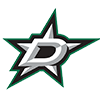Daily fantasy golf contests offer something that a season-long league simply cannot: No matter how bad your team is, there's always a fresh start next week. DraftKings even offers a fresh start after one measly day! But what FanDuel, DraftKings, Yahoo and FantasyDraft simply cannot offer is the year-long camaraderie of playing in a league with your buddies. #OldSchool
The main RotoWire league is about to enter its 20th year, and some bold-faced names in the fantasy and sports media industries take part. Not everyone has been around since the beginning, but the core has been present for well over a decade. There's a sentiment among the group that this golf league – not a football, baseball or basketball one – is the most fun of all. Sure, we're all golf fans, but the feeling is it's the favorite because of the guys who are in it.
Some of us do better than others. We have no Tiger Woods circa-2000, but we sure do have a Steven Bowditch or two. Really, the biggest difference is not knowledge, it's commitment. We all have lives and responsibilities (and other fantasy teams). Simply following golf on a weekly if not daily basis is the best plan to succeed. Rule No. 1: Do your homework. Rule No. 2: Your homework is never done.
Whether kicking things off with either a standard snake draft or an auction – as is the case with the referenced RotoWire league – it's simply rewarding to start the season
Daily fantasy golf contests offer something that a season-long league simply cannot: No matter how bad your team is, there's always a fresh start next week. DraftKings even offers a fresh start after one measly day! But what FanDuel, DraftKings, Yahoo and FantasyDraft simply cannot offer is the year-long camaraderie of playing in a league with your buddies. #OldSchool
The main RotoWire league is about to enter its 20th year, and some bold-faced names in the fantasy and sports media industries take part. Not everyone has been around since the beginning, but the core has been present for well over a decade. There's a sentiment among the group that this golf league – not a football, baseball or basketball one – is the most fun of all. Sure, we're all golf fans, but the feeling is it's the favorite because of the guys who are in it.
Some of us do better than others. We have no Tiger Woods circa-2000, but we sure do have a Steven Bowditch or two. Really, the biggest difference is not knowledge, it's commitment. We all have lives and responsibilities (and other fantasy teams). Simply following golf on a weekly if not daily basis is the best plan to succeed. Rule No. 1: Do your homework. Rule No. 2: Your homework is never done.
Whether kicking things off with either a standard snake draft or an auction – as is the case with the referenced RotoWire league – it's simply rewarding to start the season with a group of players and track them the entire way. And regardless of snake or auction, a lot of the strategy overlaps. But not all. And, candidly, this isn't rocket science. A lot of it is basic stuff.
Without further ado:
You Need a War Room
Professional teams in many sports have a draft board – so should you. Make a list of guys you would like to have, knowing you will not get all, or even most, of them. Put them in order of importance. Look at the top-tier golfers – there aren't enough to go around. The RotoWire league has 14 teams with nine golfers each – 126 in all -- and $100 to allocate. You need at least $1 for every player, but there aren't anywhere close to 14 top-tier golfers. It's possible to win without an elite golfer, but it sure helps to have that guy anchoring your roster, someone who has a chance to win every time out – including the majors.
Continuing down the draft board, look at different levels. Just like a pro team will try to figure who will be around in the third round, fourth round, etc., you do the same. You won't get all first- and second-rounders, but you better not be stuck with a bunch of fifth-rounders, either. Make a list of 10-12 guys at every level. How many levels? That depends how deep your draft goes.
Personally, my plan is to try to get one of the big names, then try for one second-tier guy – that might be a Tommy Fleetwood, Marc Leishman or Paul Casey, for instance. After that, I look for guys who play a lot and make a lot of cuts. Also, I'll try to take a flyer on a rookie. You'll probably have to take some risks to win.
Differing Strategies
In the RotoWire auction, some owners just can't wait to start bidding and owning golfers, making a dent early in the draft. Others like to sit back and see what develops. There's no right or wrong. Just be aware how the draft is unfolding, as things can change quickly and you will need to adjust.
Mid-Draft Changes
If it's a snake draft, golfers largely go in order of how good they are. In an auction, good or even great players can go long after the start of the draft. A guy's value will change at various points in the draft, depending on who has been taken, how much money everyone has left and whom you've already drafted. So you need to be able to adjust your thinking. A guy's value on the course won't change, but his value during the draft will. Pay attention to that, it's very important. One thing I have learned is, if you sit back too long, that last big-name golfer up for grabs can end up costing the most, just because he's the last one. Not everyone can get a big-name guy. And when everyone realizes there's only one left, the price gets jacked up.
Know Your History, or You're History
You have to look at history, how a player has done not only in the previous year, but the past two or more. A guy could simply have an off year. His price surely would go down, but chances are you shouldn't dismiss him entirely. Jordan Spieth just had a terrible year by his standards. He'll still be a top-price guy at our draft. If that becomes two bad years in a row, well, then that could be a red flag.
Tell It to Me Straight
Yes, the first thing to consider is a player's results. But if you focus on guys with strong tee-to-green play -- ball striking, strokes gained: tee to green, greens in regulation – they tend to do well over the long haul. You know how much easier it is when you find the fairway in your weekend game? Same thing for the pros, though of course they are about 100 yards further down the fairway than for us.
Second-Tier Golfers
As you move past the top guys or even the very good guys, look at the number of top-10 cashes and whether players are qualified for the majors and WGCs. The RotoWire league puts a premium on majors, with a bonus paid out for winning one.
A Puncher's Chance
At the bottom, look for cuts made and golfers who play a lot. See where a player sits on the priority ranking list. The higher a golfer is, the less chance he has of getting squeezed out of the smaller invitational fields. The guys who play the most are generally the worst, except for the really bad guys are simply can't get into tournaments. Still, they have value. In the RotoWire league, we can start five golfers every week. You don't want to be caught too short too many times. The Texas Open or John Deere Classic, for example, may not have the best fields, but if your lesser guys are teeing it up, that presents a puncher's chance to claim a high finish. Just ask Ryan Armour, Ted Potter Jr., Andrew Landry and Michael Kim how that worked out. They all won tournaments in 2017-18 -- yes, they really did -- and locked up their Tour card for next season.
The 'Sophomore' Jinx
A golfer who enjoys his breakthrough season can often takes a step back the next year, or even take a step back immediately after a win. The money/fame/etc. is life-altering. The bigger the success and the younger the guy, the more likely this could happen. We're not talking just rookies, but it's more likely with them. Rookie Mackenzie Hughes had a great 2016-17, winning a tournament and notching nine top-25s. He finished 36th on the money list. If you drafted him for 2017-18 based on that -- and he was taken in the RotoWire draft -- you got hosed. He had one top-10 and was outside the top-150 on the points list. This past season, second-year player Patton Kizzire won twice and had two more top-10s by the second week in January. The rest of the year he didn't earn bus fare. There's no way to really predict this sort of thing; just have it in the back of your head somewhere.
Rookies/Web.com Graduates
Here are some of the guys who finished Top-5 in the Web.com Tour regular season since it went to its current format in 2014: Justin Thomas, Adam Hadwin, Abraham Ancer, Andrew Landry. Only Thomas has gone on to stardom, but Hadwin and Landry have won PGA Tour events and Ancer contended in a 2018 playoff event. We all look for guys coming up from the secondary tour, but there is a reason they were in the minors and not the majors. The stars are few and far between. Chesson Hadley won the Web.com Tour regular-season title two years ago. That was the same Chesson Hadley who was on the PGA Tour and lost his card. The point is, take a gamble on these guys. Hadley paid off – for half a season. Don't overpay. And it's not terrible if you don't get one. There aren't enough good Web.com graduates to go around.
Europeans/Other Foreign Players
More and more, they are playing stateside. Some are now PGA Tour members, while others come just for the big events. In the RotoWire league, we used to stash a European player just for the majors and WGCs. With more guys playing in the States full-time, that strategy is antiquated. Avoid the foreigners whose games don't translate well to U.S.-style courses. Matthew Fitzpatrick comes to mind.
Let's Talk About the Tiger in the Room
Yeah, we couldn't finish this off without mentioning you-know-who. Last year, Tiger Woods went for $7 in the RotoWire league. A measly 7 bucks for one of the 20-or-so best golfers last season. This time around, the opposite will be true. Someone will pay a Tiger premium. Just like Woods' price is often inflated in DFS just because of who he is and gamers want to pick him, the interest in Tiger will be out of whack. If you are in a snake draft, you may take him one round earlier because you know he won't be there when it comes back to you and you just want to have him, because Tiger! In an auction, his price will be higher than it is for another golfer with similar recent credentials. We get it. It's fun to root for Tiger, and it's even better if he's helping you win your league. But we advise to think with your head and not your heart. Every year, there are a bunch of top-25 OWGR guys who don't win a tournament. That could be Woods this coming season, too.
Use Your Head, Not Your Heart
We touched on it just above. Try to keep emotions out of it. Don't simply green-light a guy who did wonderful things for you last year. I have learned to be wary of just about every guy on Tour. In fact, if a guy did well for me last year, I think there's no way he can do it again. The broader point is, don't pick a guy because you like him, or because you went to the same school, or because he has an awesome Instagram account. Wow, he's cool! Now move on.
Final Thought
Lastly, keep your wits about you during the draft. Stop. Focus. Breathe. It's easy to get caught up in the fast pace. It's easy to get upset if a guy you wanted went one pick before you, or went for more than you could pay. It's like real golf: You can only play one shot at a time. You can only play the next shot. Make sure it's right down the middle.


























